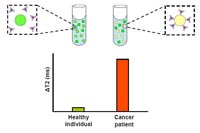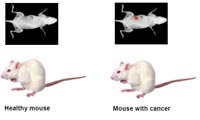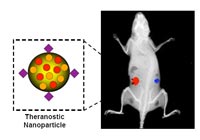Green Energy Thrust

Nanoscale Optoelectronic Materials and Devices for Energy Conversion
Nanostructure of materials and interfaces is a key issue in achieving improved efficiencies for organic photovoltaic devices (OPV) and organic light emitting diodes (OLED).

One Dimensional Semi-Conducting Architectures for Hybrid Solar Cells
Santra’s lab is synthesizing CdTe nanorods/nanowires for making solution processable CdTe/P3HT hybrid film.

Conductive Supramolecular Assemblies with High Charge Mobility
As more strain is placed on current energy supplies, due to increasing demand, solar energy will become an indispensable addition to available energy resources.

Computer Modeling for the Energy Conversion Technologies of the Future
One of the research directions in my group is theory and modeling of energy conversion processes and design of functional materials used for that purpose.

Catalysts for Direct Alcohol Fuel Cells and Alternative Energy Sources
One of the research directions in my group is theory and modeling of energy conversion processes and design of functional materials used for that purpose.

Novel electrochemical and electrical sensing methodologies: Schottky Based Gas Sensors
The integration of electrochemistry and scanning probe microscopy will permit the preparation of desired surface morphologies based on redox active molecules.
In Vitro Test Systems

Computational Neuronal Networks Lab
Research is focused on building data-true neuronal models that can be utilized to build and predict the behavior of neuronal networks.

Engineered Neuronal Networks as Drug Screening Platforms
In order to offer an alternative to conventional drug development methods, the Hickman Hybrid Systems Lab utilizes a group of cutting-edge scientific methods to create functional neuronal circuits.
Functional Nanomaterials

Conductive block copolymer systems to disperse and stabilize CNTs
The conjugated polymer block such as polythiophenes can form strong π-π interactions with carbon nanotube walls, while the non-conjugated polymer block offers good solubility and stability in a wide range of organic solvents and host polymer matrices.

An Exploration of Nanomaterial Chemistry: The Building Blocks of Functional Nanoparticles & Nanocomposite Materials
Our research group focuses on the development and synthesis of nano materials such as gold nanoparticles.

Controllable Drug Delivery Systems for Diabetic Patients
Research in my laboratory focuses on the development of drug delivery systems to address limitations in existing techniques.
Computer/Mathematical Simulations

Assistive Robotics
Research is focused on the development of novel human-robot interface (HRI) designs to facilitate ADL (activities of daily living) tasks for wheelchair bound subjects in arbitrary unstructured environments.

Development and Application of Density Functional Theory in Design of Two-Photon Absorbing Photochromic Materials for Optical Data Storage
Diarylethenes are able to undergo light-induced transition from the open to closed ring isomer (photocyclization) accompanied by the change in optical properties (photochromism). This ability holds a great promise for photonic applications, including optical data storage and ultrafast optical switching. Photocyclization initiated by two photon absorption (2PA) could drastically increase the density of these devices. We analyze the Kohn-Sham orbitals responsible for photocyclization, and suggest the molecular structures that are expected to have both 2PA and photochromic activity. The proposed modifications are validated using the potential energy surfaces of the excited states and two-photon absorbing profiles, predicted using Time-Dependent Density Functional Theory (TD-DFT).

Density Functional Theory in Design of Fatigue-resistant Photochromic Materials for Optical Switching and Data Storage
Photochromic compounds change their color upon irradiation owing to the transition from open to closed ring isomers (photocyclization). They have prospective applications in optical switches and data storage applications, which require design of chromophores with enhanced properties of interest. Prediction of these properties based on the molecular structure is an important component of rational design strategy. We apply Density Functional Theory methods to predict kinetics of cycloreversion of thermal stability, fatigue resistance and the mechanism of byproduct formation for in dithienyl perfluorocyclopentenes.
Quantum Dynamics

Quantum Information Science
Quantum Information Science can be utilized to improve the security of satellite communication. Dr. Michael Leuenberger is currently exploring this possibility from both a theoretical and an experimental perspective. This approach has the potential of providing unconditionally secure quantum communication between land-based stations and satellites.

Quantum Teleportation
The current focus of our studies is in the transfer of quantum information from one quantum dot to another one, distant from the first one, by means of the conditional single-photon Faraday rotation.
Bio-Imaging

Imaging and Spectroscopy of Biological Systems
The extreme sensitivity of single molecule laser scanning confocal microscopy allows us to detect the presence of a single molecule or nanoparticle.

Cancer Biomarker Detection
In molecular diagnostics, Dr. Perez’s group is interested in the early diagnosis of cancer.

Cancer Imaging
In the field of molecular imaging, Dr. Perez’s group aims to develop mutimodal imaging modalities for cancer imaging.

Targeted Cancer Therapy
Dr. Perez’s lab designs and synthesizes novel polymeric nanoparticles suitable for targeted imaging and drug delivery.

Pathogen and Toxin Detection
Dr. Perez’s laboratory is actively developing magnetic nanosensors for the rapid detection of microbiological agents in complex media.

Nanoparticle Technologies
This research focuses on the development of nanoparticle technologies and their application in nanomedicine, molecular imaging, and molecular diagnostics.

Multimodal Quantum Dots for Imaging
Research in my laboratory focuses on the development of multimodal biodegradable/biocompatible nanoprobe sensors.
NanoElectronics & NanoPhysics

Nano-Electrochemistry
This research focuses on using electrochemistry to create nanostructured surfaces and in the sensing and optoelectronic applications of nanostructured surfaces.

NanoScale Quantum Transistors
My research group is interested in the fabrication of nanoscale electrical and optical devices consisting of low dimensional chemical nanostructures.
